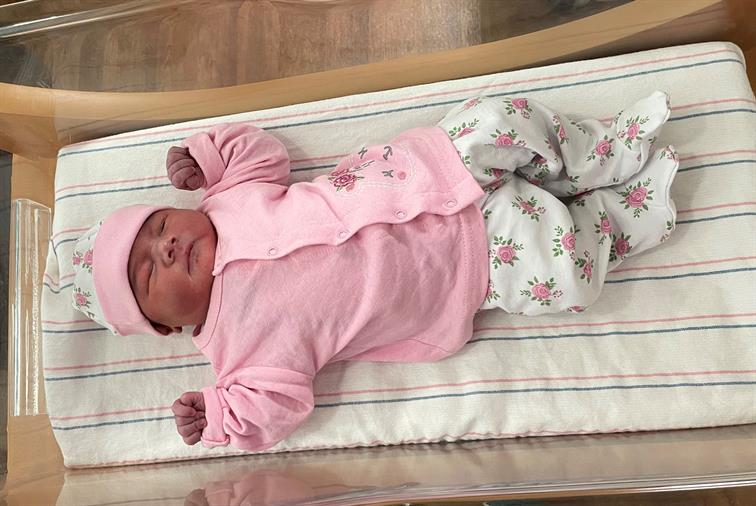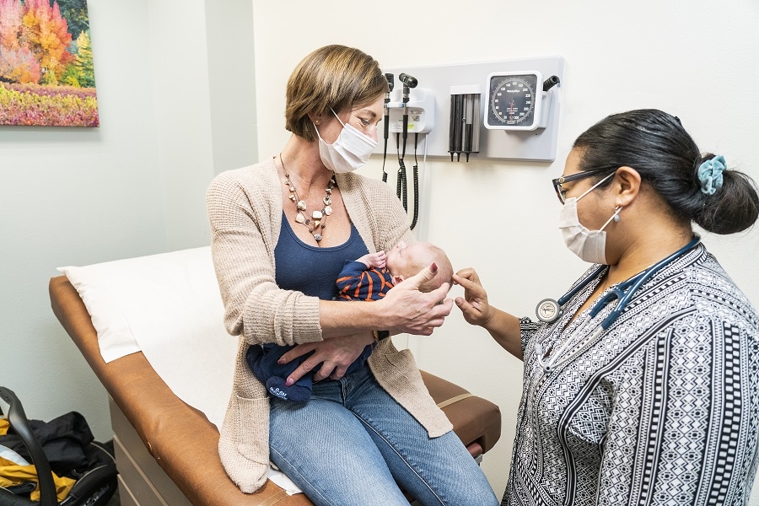Third Trimester: The Home Stretch
Aug 16, 2024

Congratulations — you're in your third trimester! Weeks 29 through 40 are the last of your pregnancy. These final weeks are an exciting time as you get ready to welcome your baby into the world.
Preparing for childbirth
By now, the baby's bones are fully formed and their eyes open and close. Although the lungs aren't completely developed yet, your baby is making some breathing movements.
“You may notice your baby's movements feel different as you get closer to your due date,” says Kori Pienovi, certified nurse-midwife with Adventist Health Portland. “That's because they are quickly filling up the space in the uterus, so their movements change from kicks and jabs to body shifts and stretches. They should still move as frequently as they have during your whole pregnancy, and if you feel that the frequency of movements has changed, reach out to your provider.”
“Late in the third trimester, the baby may change to a head-down position and drop lower in your pelvis,” she adds. “The baby is considered full-term — meaning they are ready to be born — between 37 and 42 weeks.”
Your body is preparing for labor and childbirth now. You might feel more aches and pains, especially in your back, hips and pelvis. You also may have trouble sleeping. Try to sleep on your left side, which is better for circulation, and place a pillow between your knees or behind your back.
Baby's growth puts pressure on your organs. You may feel short of breath or need to go to the bathroom more often than usual. Your breasts may feel tender, and your nipples may leak a watery, pre-milk liquid called colostrum.
Emotionally, the third trimester can be both happy and stressful. As you're getting your home ready for baby's arrival, remember to take it easy. Make it a priority to get a good night's sleep and take naps during the day if you’re able to.
What to expect at your appointments
As you get closer to your due date, your appointments will become more frequent.
“Your doctor or midwife will discuss signs of labor and what to do when you think labor has begun,” says Kori. “They will offer to check your cervix for dilation starting around week 39 or 40. These optional cervical checks can let you know how far you’ve dilated — but won’t necessarily tell you how soon baby will arrive.”
Preparing for postpartum
If you have time (and energy!), do any prep work that you can before baby arrives to make coming home easier. Set up your breastfeeding or pump/bottle-washing station, collect your postpartum supplies, prepare freezer meals, and arrange for pet care or child care for older children for when you go into labor.
While the hospital will provide plenty of postpartum supplies, you may need to purchase extra pads, nipple cream and anything else you’ll want to be more comfortable in those first weeks. Now is the time to collect those items and make sure they’re easy to find.
If you’re planning for newborn photos, reach out to local photographers well before baby’s arrival to make sure they have openings near your due date. Make a plan with your partner for how you’ll tell friends and family about the baby’s arrival. Consider setting up a shared digital album for loved ones so you don’t have to send lots of separate texts to everyone while you’re recovering. Plus, you can keep the album going as baby grows!
Setting boundaries and asking for help
The weeks before baby’s arrival are also a good time to consider who you’d like visiting at the hospital — and once you come home. Think about who you’d like in the room while you’re laboring and delivering and whether you’d like visitors during recovery. Setting expectations with loved ones before you’re in labor can help put your mind at ease and make sure everyone is on the same page.
It’s also a great time to let loved ones know how they can best support you postpartum. Friends and family are always eager to help with and visit a new baby, so don’t be shy about letting them know what you truly need — meals, child care for older children, or help cleaning and caring for the home.
Ready, set, go!
When the time comes, your care team at the Family Birth Place will be there for you during every step of labor and delivery. Learnwho’s who on your labor and delivery teamso you know what to expect when you arrive.


